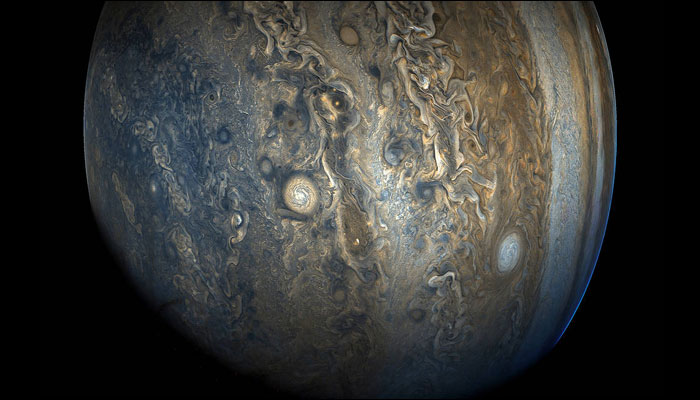New Delhi: Jupiter’s iconic Great Red Spot is getting taller as it shrinks, NASA revealed on Tuesday.
One of Jupiter’s most eye-catching, enigmatic features, the ‘Great Red Spot’ is being monitored since 1830.
As researchers try to delve deep into the spot that has become the face of Jupiter and has possibly been existing for more than 350 years, a NASA researcher in February this year had revealed that the spectacular storm was disappearing and could fade away in as a little as a decade.
Being the largest – and now officially the oldest – planet of the solar system, Jupiter has caught the fancy of scientists and astronomers compelling them to study the gas giant better by delving into its interiors.
The Great Red Spot is a giant oval of crimson-colored clouds in Jupiter’s southern hemisphere that race counterclockwise around the oval’s perimeter with wind speeds greater than any storm on Earth.
The findings, published in the Astronomical Journal, indicate that the Great Red Spot recently started to drift westward faster than before.
Historically, it’s been assumed that this drift is more or less constant.
The iconic storm that is now 10,000-mile-wide (16,000-kilometer-wide), was estimated to be about 35,000 miles (56,000km) in diameter in the 1800s – wide enough for four Earths to fit side by side.
The study confirms that the storm has been decreasing in length overall since 1878 and is big enough to accommodate just over one Earth at this point.
But the historical record indicates the area of the spot grew temporarily in the 1920s.

“Storms are dynamic, and that’s what we see with the Great Red Spot. It’s constantly changing in size and shape, and its winds shift, as well,” said Amy Simon, an expert in planetary atmospheres at NASA’s Goddard Space Flight Centre in Maryland.
“There is evidence in the archived observations that the Great Red Spot has grown and shrunk over time,” added Reta Beebe, Professor at New Mexico State University in Las Cruces.
“However, the storm is quite small now, and it’s been a long time since it last grew,” Beebe said.
Because the storm has been contracting, the researchers expected to find the already-powerful internal winds becoming even stronger.
However, instead of spinning faster, the storm appears to be forced to stretch up. The change in height is small relative to the area that the storm covers, but it’s still noticeable.
Further, the Great Red Spot’s colour is also deepening, becoming intensely orange since 2014, the researchers observed.
While the researchers are not sure why that’s happening, it’s possible that the chemicals which colour the storm are being carried higher into the atmosphere as the spot stretches up.
At higher altitudes, the chemicals would be subjected to more UltraViolet radiation and would take on a deeper colour.
Once big enough to swallow three Earths with room to spare, the mystery surrounding Great Red Spot seems to deepen as the iconic storm contracts.
Researchers do not know whether the spot will shrink a bit more and then stabilize, or break apart completely.
“If the trends we see in the Great Red Spot continue, the next five to 10 years could be very interesting from a dynamical point of view,” the researchers said.
“We could see rapid changes in the storm’s physical appearance and behaviour, and maybe the red spot will end up being not so great after all,” they added.
With IANS inputs

